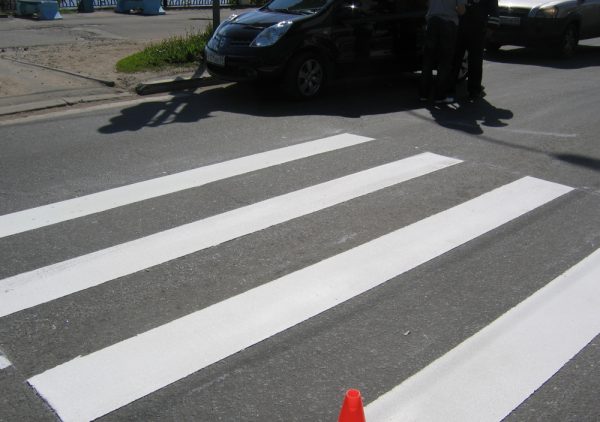Marking plays a paramount role in road construction. It helps drivers more easily navigate in the stream and adhere to the lane, which prevents the occurrence of an accident. It should be bright, clearly distinguishable in bad weather, therefore it is applied taking into account the current GOST standards.
- Thermoplastic and its features
- Physicochemical Characteristics
- Thermoplastic Composition
- Types of Thermoplastics
- Advantages and disadvantages of thermoplastics
- Transport and storage of thermoplastics
- Thermoplastic marking technology
- Coating preparation
- Used technique
- Thermoplastic melting
- Road marking
- The effect of moisture on the surface of asphalt concrete
- Typical errors in thermoplastic marking
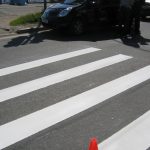
High-quality markings ensure the safety of drivers, pedestrians and cyclists. Every day it is exposed to a dozen negative environmental factors:
- precipitation;
- ultraviolet radiation;
- constant friction;
- temperature differences.
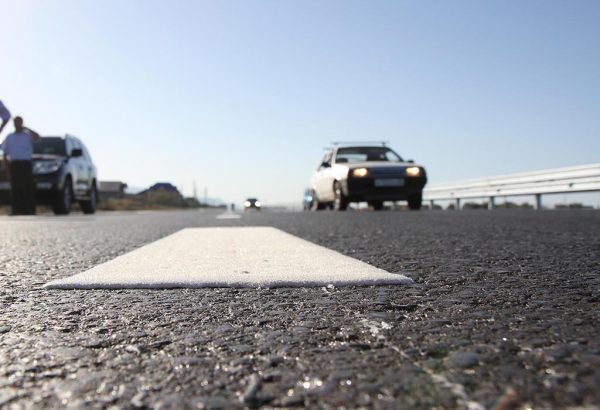
to contents ↑This imposes a number of restrictions on the materials used for marking. Thermoplastic for road marking has now appeared on the market. It quickly gained popularity because it is resistant to the above factors.
Thermoplastic and its features
Innovative material has many advantages. The main thing is that it is more practical, reliable, more durable than ordinary paints used earlier for marking roadways and sidewalks. It is made taking into account the standards of GOST R 52575-2006. Designed to create markings on horizontal surfaces:
- asphalt roads;
- outdoor parking and parking;
- public transport stops;
- pedestrian crossings.
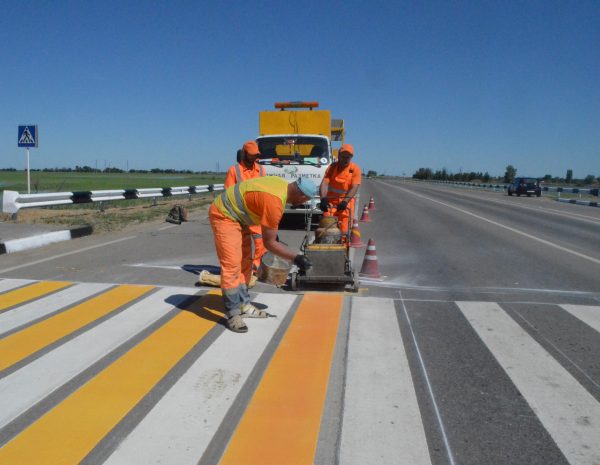
Thermoplastic is also used in industry. Suitable for marking storage rooms, production halls, unloading sites. One of its features is that it is applied at a temperature of +180 degrees Celsius. For this, a special extruder / carriage type technique is intended.
to contents ↑Physicochemical Characteristics
Bulk powder mixture, easy to load, transport, use. It has a light gray color of sea sand; lumps up to 10 mm are found in consistency. Among the key characteristics it should be noted:
- density in the hardened state - 1.85 / 2.2 g / cu. cm;
- softening temperature - 80 degrees Celsius;
- brightness coefficient - 75%;
- curing time - approximately 10 minutes at a temperature of + 18 ... +22 degrees Celsius and humidity 60–70%;
- flow rate - 4.0 g / s;
- the range of operating temperatures is approximately 180–205 degrees Celsius.
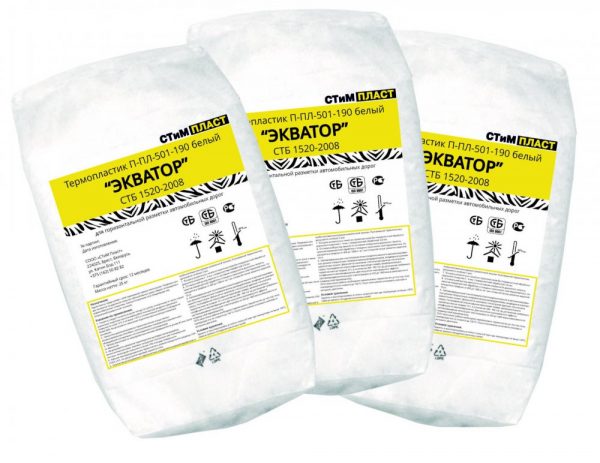
Thermoplastic consumption for road marking is approximately 8 kg / sq. m with a layer thickness of up to 4 mm. Standard thickness ranges from 2 to 4 mm.
To increase the retroreflective effect in the dark, mixtures with glass beads are produced. They should be at least 20% of the total mass.To achieve the best effect, it is recommended that you follow the manufacturer's instructions.
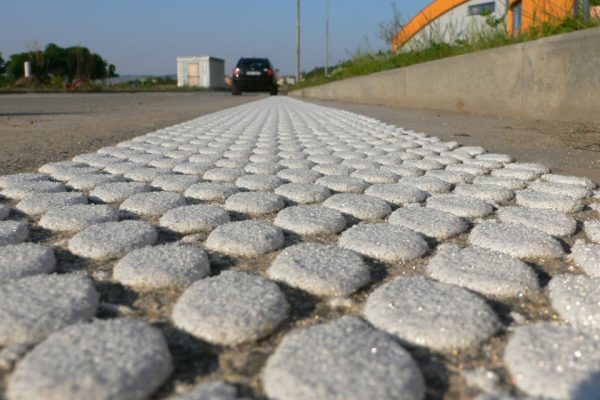
Thermoplastic Composition
In the manufacture of this tool, the following materials can be used:
- polyester / petroleum resin;
- transformer oil;
- organic pigments;
- marble screenings, porcelain chips and other white fillers;
- sand;
- titanium dioxide / zinc;
- plasticizers;
- additives that enhance consumer qualities.

Despite the existence of a single formulation for thermoplastics, each manufacturer seeks to adhere to its own composition. Upon purchase, you should carefully read it and study the key technical specifications.
to contents ↑There are several types of this material. The peculiarity lies in the fact that they are compatible with each other, as well as with other marking materials. Thermoplastic is often used together with fractional fillers.
Types of Thermoplastics
The most effective is a composition based on a polyester resin. Great for highways with low traffic. Resistant to changing seasons and sudden changes in air temperature.
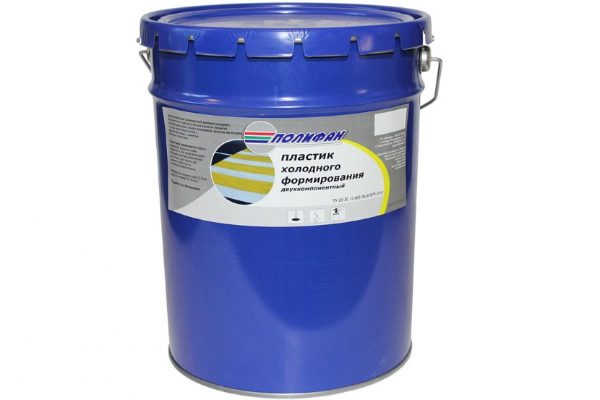
For asphalt concrete coatings, petroleum polymer thermoplastic is used. It is known for its resistance to increased loads and has a reinforced reflective effect, ensuring road safety.
to contents ↑Advantages and disadvantages of thermoplastics
This material has many advantages, and the main of them is its excellent adhesion to the surface. Thermoplastic holds tight to asphalt and other surfaces. Cohesion coefficient meets international standards. Other advantages include:
- high speed of drying (does not allow smearing of a marking);
- excellent abrasion resistance (no bald spots form on the surface);
- moderate material consumption (provides tangible cost savings);
- maintaining excellent visibility even under adverse conditions (heavy rain, snowfall, dense fog).
Unfortunately, thermoplastic has one significant drawback. We are talking about increased slip when hitting a painted part of the marking. The presence of reflective balls reduces this effect. It can be completely eliminated by adding quartz sand to the composition of thermoplastic, but this leads to an increase in costs at the stage of marking.
to contents ↑Transport and storage of thermoplastics
It was noted above that the transportation of this bulk material does not cause difficulties. For convenience, it is packed in plastic bags. It is noteworthy that many experts prepare thermoplastic (warm it) together with the container. Polyethylene does not dissolve and acts as an additional filler, but this largely depends on the composition and characteristics of the thermoplastic itself.
There are two things to consider when storing this material:
- Keep bags in dark rooms where sunlight does not penetrate.
- Monitor the level of humidity.
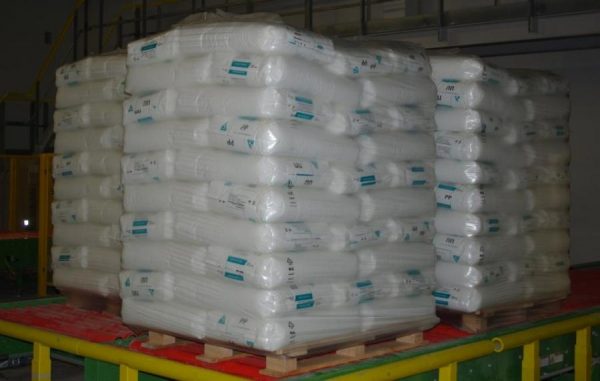
The last condition is the most important. Water can cause it to boil when the thermoplastic is heated to operating temperature. This entails the formation of air bubbles, which degrades the marking structure during curing. In this regard, the fluidity of the material is reduced.
to contents ↑Prolonged exposure to sunlight softens the resin, which is part of thermoplastic. This may contribute to the sintering of the powder material. A dense piece is formed that complicates the loading of material into the extruder boiler.
Thermoplastic marking technology
In order for the designations on the roadway to turn out to be high-quality and durable, it is necessary to follow the recommendations of SNiP and the regulatory documents that govern this process.There are several basic steps, each of which should be considered separately.
Coating preparation
This is a key step, on which the reliability of the markup and its stability to external factors largely depend. The surface is completely cleaned of dust / dirt and thoroughly dried. These works are not recommended to be carried out at an air temperature not lower than +10 degrees Celsius. Otherwise, the roadway will need to be heated with burners.
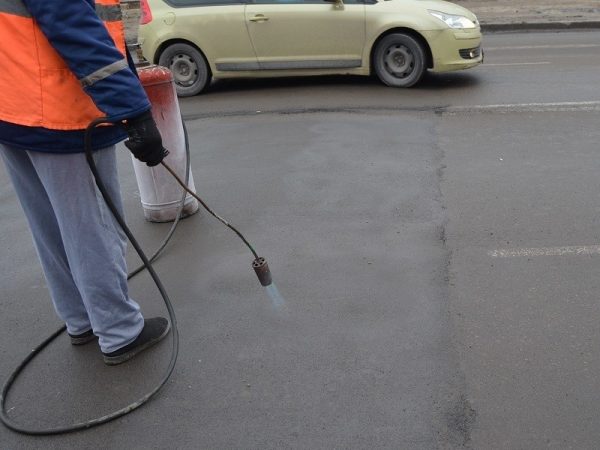
to contents ↑The upper limit of permissible temperature is +60 degrees Celsius, since this is achieved the optimum curing time of thermoplastic. Old markings must be completely removed. Its presence reduces the adhesion of thermoplastics, and it begins to exfoliate over time.
Used technique
An extruder is used to create the marking. It melts thermoplastic to the required temperature. Hydraulic blades thoroughly mix the material in the hopper. This allows you to achieve the desired consistency and create a homogeneous mass without lumps. Thermoplastic enters the guides, after which it is applied to the roadway. If the addition of reflective elements is required, they are loaded into a separate hopper.
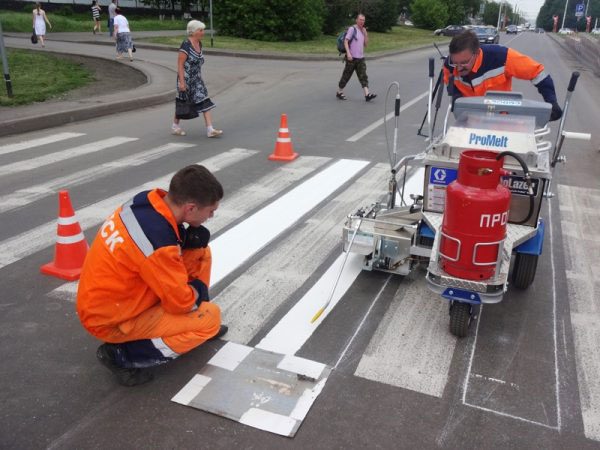
Often used devices for manual labeling. They are a transfer furnace for melting and preparing the material. In this case, thermoplastic is applied to the canvas using stencils.
to contents ↑Thermoplastic melting
For one batch, loading 3-5 kg of thermoplastic is allowed. Mixing takes about 40 minutes, while maintaining a stable temperature of +160 degrees Celsius.
Mixing provides redistribution of solid particles, including:
- fillers;
- pigments
- glass balls.
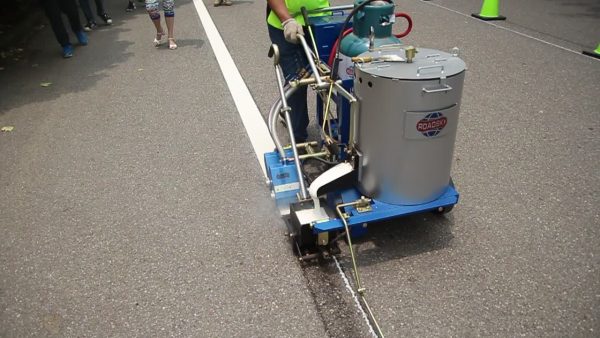
After this time, melt homogenization occurs. Thermoplastic acquires stable properties and is ready for application on the road surface.
to contents ↑Some experts believe that to achieve the desired consistency, it is necessary to mix the material for 1-3 hours at a temperature of +140 to +160 degrees Celsius. In this case, a complete distribution of the components in the melt is ensured.
Road marking
At this stage, you must adhere to the instructions specified by the manufacturer of thermoplastics. The permissible values of the ambient temperature and relative humidity are indicated here. If you do not adhere to these conditions, then over time the following marking damage is observed:
- peeling;
- abrasion.
This is especially evident in extreme conditions: with sudden braking, rapid acceleration, and turns. The situation is also aggravated by the use of studded tires in the cold season: protruding components can damage the markings if the manufacturer's instructions were not followed when applying thermoplastics.
The reduced coating temperature must be compensated for by heating with a gas burner. Of course, thermoplastic will cling to the surface, but when the warm season begins and the road surface gradually warms up, cracks will appear on the markings. This effect does not even compensate for the elasticity of the composition.
to contents ↑The effect of moisture on the surface of asphalt concrete
The hydrophobic properties of thermoplastics directly depend on its composition and the use of resin types:
- polyester - air humidity not more than 85–90%, 2-3 hours after rain;
- oil-polymer - up to 70% and after 12 hours after precipitation.
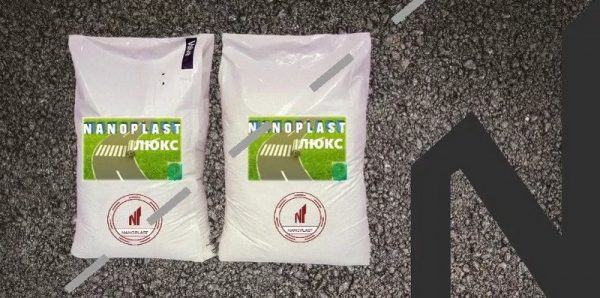
to contents ↑If thermoplastic is applied to a damp surface, then before it fully cures, it passes vapors rising from the surface of the roadway. As a result, distinctive craters appear on the markings. This leads to a decrease in adhesion.
Typical errors in thermoplastic marking
If you structure all the errors that were mentioned earlier and put them on a separate list, it will look like this:
- Drawing a new marking on old paint.
- Material underheating caused by either poor-quality melting or too low ambient temperature.
- Poor mixing with violation of the time frame and temperature conditions.
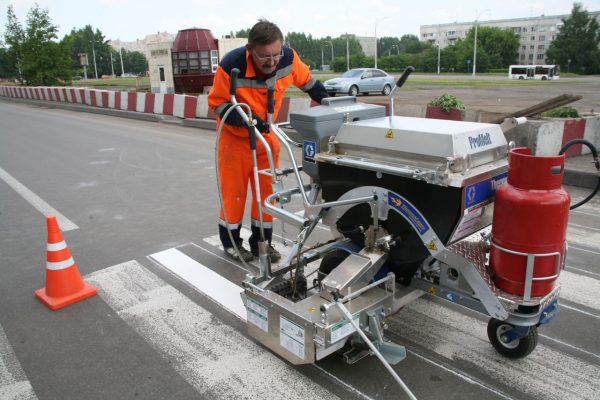
In general, thermoplastic is the best solution for creating high-quality markings. It is much more reliable and economical than the paints used earlier, and therefore actively displaces them from the market.



